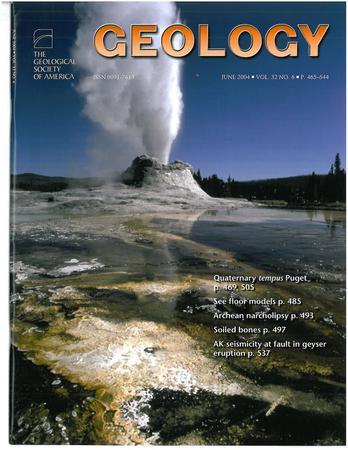Evolution of a microfracture network induced by hydrocarbon generation during experimental maturation of organic-rich lacustrine shale
IF 4.6
1区 地球科学
Q1 GEOLOGY
引用次数: 0
Abstract
Microfracture and matrix-pore networks evolve within organic-rich shales in response to thermal maturation. Here, we report observations on the Triassic Chang 7 Member black shale (total organic carbon [TOC] = 26.8 wt%; Ordos Basin in China) at varying stages of thermal maturation induced by miniature-core-plug gold-tube pyrolysis. Observations via scanning electron microscope and X-ray computed microtomography reveal that microfractures in the highly organic-rich shale are well developed throughout the entire oil-generation window; however, matrix pores are relatively underdeveloped. An abundance of bedding-parallel microfractures and especially lens-shaped microfractures are newly formed at EasyRo = 0.71%−0.91% (EasyRo—equivalent to vitrinite reflectance), whereas bedding-perpendicular microfractures appear only at EasyRo ≥1.14%, both as a consequence of fluid overpressure and mechanical disequilibrium compaction. Compaction is further recorded by morphological variation of Chrysophyceae cyst fossils in the shale upon thermal maturation. The microfracture geometries and abundant oil droplets trapped within the microfractures indicate these open microfractures may potentially serve as oil retention and storage space underground. The later development of bedding-perpendicular microfractures that cut across the bedding-parallel microfractures creates an interconnected three-dimensional fracture network and, therefore, facilitates significant hydrocarbon (HC) expulsion and/or transport via vertical migration from the generation zone. Our experimental findings improve the current understanding of HC primary migration and expulsion in organic-rich shales and suggest a possible new mechanism of shale oil retention and storage in thick high-TOC intervals and/or in overpressured basins. Moreover, our study sheds light on the dynamic process of fracturing that may accompany in situ underground conversion of medium- to low-maturity shale oil.富有机质湖相页岩实验成熟过程生烃微裂缝网络演化
在富有机质页岩中,微裂缝和基质孔隙网络的演化是对热成熟的响应。本文报道了三叠系长7段黑色页岩(总有机碳[TOC] = 26.8 wt%;微岩心-塞式金管热热解作用下的不同热成熟阶段。扫描电镜和x射线计算机显微断层扫描结果显示,高富有机质页岩微裂缝发育良好,贯穿整个生油窗口;然而,基质孔隙相对不发达。在EasyRo = 0.71% ~ 0.91% (EasyRo =镜质组反射率)时,新形成了大量的顺层微裂缝,尤其是透镜状微裂缝,而顺层垂直微裂缝仅在EasyRo≥1.14%时出现,这是流体超压和机械不平衡压实作用的结果。热成熟过程中,页岩中包囊化石的形态变化进一步记录了压实作用。微裂缝的几何形状和微裂缝内丰富的油滴表明,这些开放的微裂缝可能在地下起到储油空间的作用。层理垂直微裂缝的后期发育穿过了层理平行微裂缝,形成了一个相互连接的三维裂缝网络,从而促进了大量烃(HC)的排出和/或从生成带通过垂直运移进行输送。我们的实验结果提高了目前对富有机质页岩中HC初级运移和排出的认识,并提出了在厚的高toc层段和/或超压盆地中页岩油保留和储存的可能新机制。此外,我们的研究还揭示了中低成熟页岩油地下原位转化过程中压裂的动态过程。
本文章由计算机程序翻译,如有差异,请以英文原文为准。
求助全文
约1分钟内获得全文
求助全文
来源期刊

Geology
地学-地质学
CiteScore
10.00
自引率
3.40%
发文量
228
审稿时长
6.2 months
期刊介绍:
Published since 1973, Geology features rapid publication of about 23 refereed short (four-page) papers each month. Articles cover all earth-science disciplines and include new investigations and provocative topics. Professional geologists and university-level students in the earth sciences use this widely read journal to keep up with scientific research trends. The online forum section facilitates author-reader dialog. Includes color and occasional large-format illustrations on oversized loose inserts.
 求助内容:
求助内容: 应助结果提醒方式:
应助结果提醒方式:


